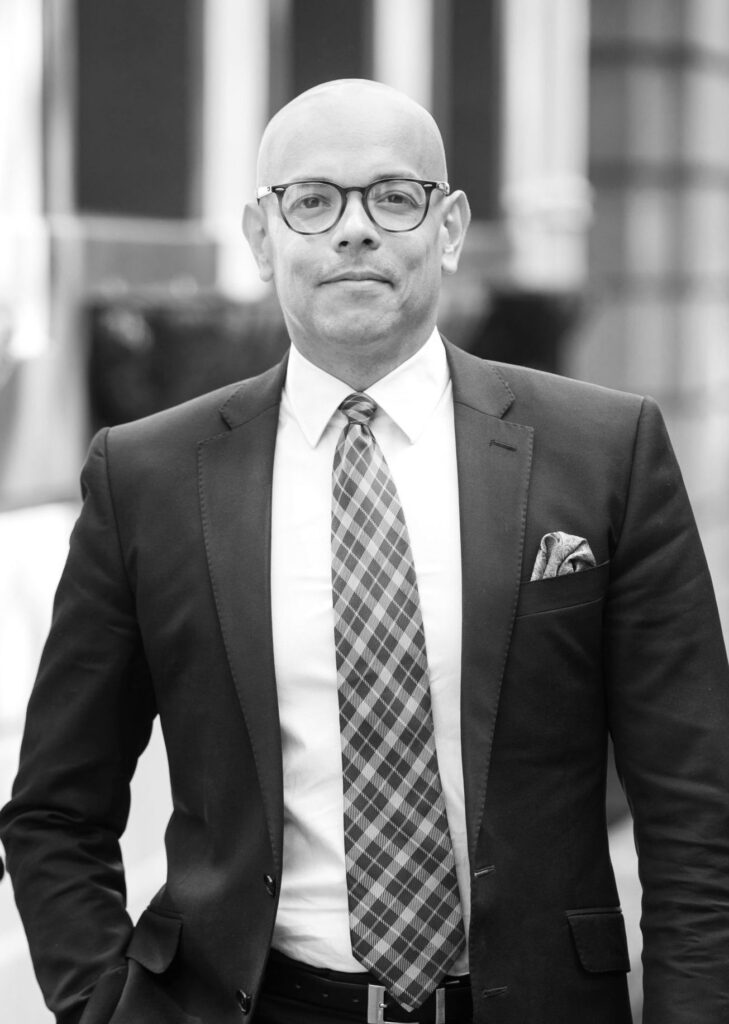AI Implications for Copyright | Developments in Law
Generative Artificial Intelligence (‘AI’) is constantly developing technology that is quickly exerting an ever-increasing influence on our lives. AI directs computers towards thinking and behaving in a fashion resembling that of ‘humans’. AI feeds on information gathered from its surroundings, and responds appropriately and according to what it learns or senses.
The constant growth of the use of AI will almost certainly require legislative reform and is likely to result in an abundance of contested cases before the courts.
Currently, the regulating framework is provided by the Copyright, Designs and Patents Act 1988 (the Act’) and the EU DSM Directive and EU Infosoc Directive (‘the EU Directives’).
An ongoing High Court case in the name of Getty Images (US), Inc. v Stability AI Inc is focusing much attention on the applicability of the current legislation and its ability to cover the new AI problems anticipated.
Stuart Southall of Kangs Solicitors outlines the current law and the potential consequences of the ongoing High Court activity.
The Team at Kangs Solicitors offers vast experience gained from representing clients involved in intellectual property disputes involving issues of Copyright, Patents, and Trademarks of every description and at every level, whether seeking to pursue a claim against an opponent or the defence of one which has been received.
Our experience covers commercial disputes of every possible nature affecting individuals, unincorporated bodies and companies, whether they be small or multinational including, for example, actions involving:
For an initial no obligation discussion, please contact our team at any of the offices detailed
below:
London
Birmingham
Manchester
24 Hours number
The Fundamental Copyright Problem | Kangs AI Disputes Solicitors
AI provides a neural network trained to develop an output in-line with the consumer’s request.
This training process has the potential to infringe Copyright, given that hundreds of thousands of items of copyrighted material are fed to the neural network where they are continuously reproduced in the pursuit of the desired product.
It is argued that it is almost impossible to obtain a license for all of the copyrighted material utilised for training the neural network.
However, without proper regulation and enforcement, there are fears that, inter alia, creative artists will be left with unprotected rights over their own work.
Current Litigation | Kangs Intellectual Property Disputes Solicitors
Getty Images (US), Inc. v Stability AI Inc
This claim has been commenced in the UK by Getty Images following the claim which it issued in the US in which it is alleged:
‘Stability AI unlawfully copied and processed millions of images protected by copyright… to the detriment of the content creators and chose to ignore viable licensing options and long‑standing legal protections’
Andersen et al v Stability AI Ltd. et al.
This Case is being pursued in the District Court, California by artists Sarah Andersen, Kelly McKernan and Karla Ortiz against Stability AI Ltd and Stability AI Inc; Mid Journey Inc and DeviantArt Inc claiming that:
‘I. AI IMAGE GENERATORS ARE 21ST-CENTURY COLLAGE TOOLS THAT VIOLATE THE RIGHTS OF MILLIONS OF ARTISTS
1. Stable Diffusion is a software product—defined below as an AI Image Product— maintained and sold by Stability.
2. Stability downloaded or otherwise acquired copies of billions of copyrighted images without permission to create Stable Diffusion, including Plaintiffs’. These images are defined below as “Training Images.”
3. By training Stable Diffusion on the Training Images, Stability caused those images to be stored at and incorporated into Stable Diffusion as compressed copies. Stability made them without the consent of the artists and without compensating any of those artists.
4. When used to produce images from prompts by its users, Stable Diffusion uses the Training Images to produce seemingly new images through a mathematical software process. These “new” images are based entirely on the Training Images and are derivative works of the particular images Stable Diffusion draws from when assembling a given output. Ultimately, it is merely a complex collage tool.
5. These resulting derived images compete in the marketplace with the original images. Until now, when a purchaser seeks a new image “in the style” of a given artist, they must pay to commission or license an original image from that artist. Now, those purchasers can use the artist’s works….. with the artist’s without compensating the artist at all…’
Basically, the UK case being brought by Getty Images will have considerable regard for the US proceedings in Andersen. The situation is clearly one which, potentially, may result in worldwide litigation.
The Relevant Statutory Law and EU Directives| Kangs Copyright Solicitors
The Statutory Law
The Copyright, Design and Patents Act 1988 provides as follows:
’17 Infringement of copyright by copying.
(1) The copying of the work is an act restricted by the copyright in every description of copyright work; and references in this Part to copying and copies shall be construed as follows.
(2) Copying in relation to a literary, dramatic, musical or artistic work means reproducing the work in any material form.
This includes storing the work in any medium by electronic means.
(3) In relation to an artistic work copying includes the making of a copy in three dimensions of a two-dimensional work and the making of a copy in two dimensions of a three-dimensional work.
(4) Copying in relation to a film or broadcast includes making a photograph of the whole or any substantial part of any image forming part of the film or broadcast.
(5) Copying in relation to the typographical arrangement of a published edition means making a facsimile copy of the arrangement.
(6) Copying in relation to any description of work includes the making of copies which are transient or are incidental to some other use of the work.
18 Infringement by issue of copies to the public.
(1) The issue to the public of copies of the work is an act restricted by the copyright in every description of copyright work.’
The EU Directives
Alongside the above, the EU Digital Single Market Directive and the EU Infosoc Directive are the primary regulations governing Copyright.
EU Digital Single Market Directive
Article 3
Text and data mining for the purposes of scientific research
1. …for reproductions and extractions made by research organisations and cultural heritage institutions in order to carry out, for the purposes of scientific research, text and data mining of works or other subject matter to which they have lawful access.
2. Copies of works or other subject matter made in compliance with paragraph 1 shall be stored with an appropriate level of security and may be retained for the purposes of scientific research, including for the verification of research results.
3. Rightholders shall be allowed to apply measures to ensure the security and integrity of the networks and databases where the works or other subject matter are hosted. Such measures shall not go beyond what is necessary to achieve that objective.
4. Member States shall encourage rightholders, research organisations and cultural heritage institutions to define commonly agreed best practices concerning the application of the obligation and of the measures referred to in paragraphs 2 and 3 respectively.’
Article 4
Exception or limitation for text and data mining
1. Member States shall provide for an exception or limitation….. for reproductions and extractions of lawfully accessible works and other subject matter for the purposes of text and data mining.
2.Reproductions and extractions made pursuant to paragraph 1 may be retained for as long as is necessary for the purposes of text and data mining
3. The exception or limitation provided for in paragraph 1 shall apply on condition that the use of works and other subject matter referred to in that paragraph has not been expressly reserved by their rightholders in an appropriate manner, such as machine-readable means in the case of content made publicly available online.
4. This Article shall not affect the application of Article 3 of this Directive.’
EU InfoSoc Directive
Article 5
Exceptions and limitations
1. Temporary acts of reproduction referred to in Article 2, which are transient or incidental [and] an integral and essential part of a technological process and whose sole purpose is to enable:
(b) a lawful use of a work or other subject-matter to be made, and which have no independent economic significance, shall be exempted from the reproduction right provided for in Article 2.
2. Member States may provide for exceptions or limitations to the reproduction right provided for in Article 2 in the following cases:
(b) in respect of reproductions on any medium made by a natural person for private use and for ends that are neither directly nor indirectly commercial, on condition that the rightholders receive fair compensation which takes account of the application or non-application of technological measures referred to in Article 6 to the work or subject-matter concerned;
3. Member States may provide for exceptions or limitations to the rights provided for in Articles 2 and 3 in the following cases:
(i) incidental inclusion of a work or other subject-matter in other material;
4. The exceptions and limitations provided for in paragraphs 1, 2, 3 and 4 shall only be applied in certain special cases which do not conflict with a normal exploitation of the work or other subject-matter and do not unreasonably prejudice the legitimate interests of the rightholder.’
This detailed and comprehensive legislation seems to indicate that if, during training, the procedure uses materials incidentally as part of the technological process, the reasons for doing so is not economically significant and the materials are stored and deleted in accordance with the prescribed manner, then the process would fall under the exceptions provided.
However, the phrase ‘lawful use’ contained in the Directives is restrictive. Lawful use of Copyrighted materials is not defined in any other EU Directive. The term is therefore interpreted as meaning that authorisation from the Copyright holder is still necessary and the material’s use must not be restricted by applicable legislation.
How Can We Help You? | Kangs Copyright and Patent Disputes Solicitors
It will be appreciated that the law governing Copyright and AI is difficult to determine at the present time and will see substantial changes in the years ahead as AI technology develops.
Currently, the EU Parliament is working on AI legislation expected to be passed later this year and, once heard, the Getty Images v Stability AI cases may set important precedents as well.
The Team at Kangs Solicitors keeps abreast of the constant changes in both Stautory and Case Law and provides clients with professional up to the minute advice whatever the nature of the dispute.
If you require assistance in commercial proceedings, including those of a Copyright and Patent Infringement nature , it is essential that you seek immediate professional assistance.
If we can be of assistance, our Team is available via telephone 0333 370 4333 and by email info@kangssolicitors.co.uk.
We provide initial no obligation discussion at our three offices in London, Birmingham and Manchester.
Alternatively, discussions can be held virtually through live conferencing or telephone.
Contact:


Stuart Southall
Partner




